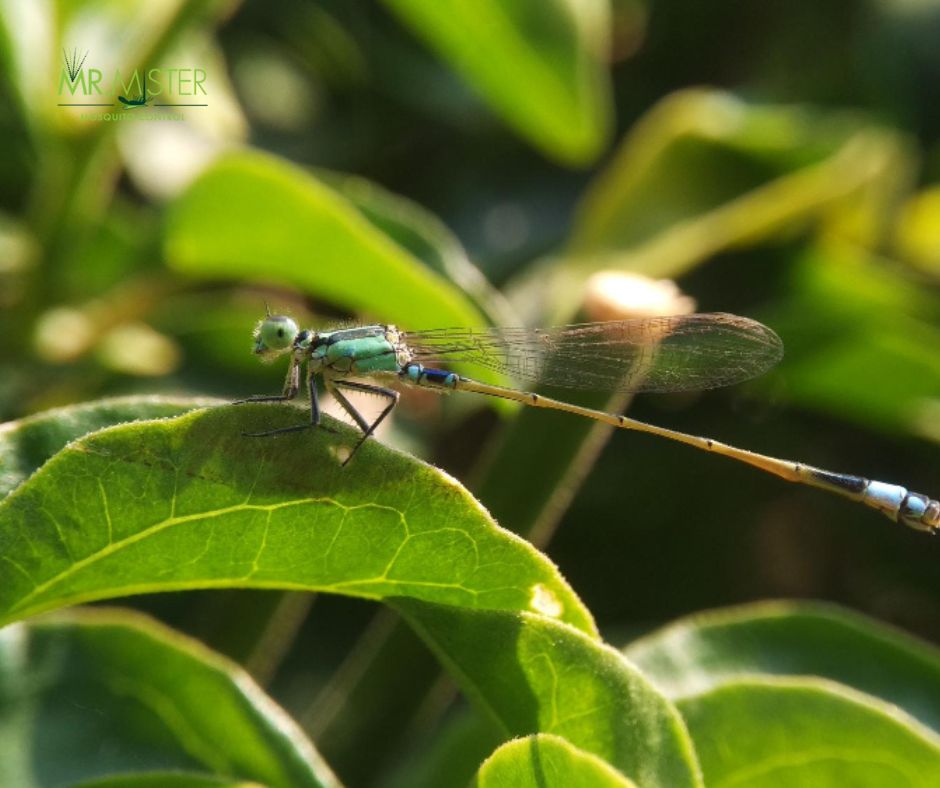Mosquito Life Cycle Insights: Understanding Their Lifespan
Mosquitoes are among the most common and annoying pests known to humanity.
However, beyond their nuisance factor, they play a significant role in ecosystems.
They can pose serious health risks by transmitting diseases such as malaria, dengue fever, Zika virus, and West Nile virus.
Understanding the life cycle of mosquitoes is crucial for effective control and prevention strategies.
In this article, we delve into the intricate details of the mosquito lifecycle, shedding light on each stage from egg to adult.
Egg Stage
The mosquito life cycle begins when a female mosquito lays eggs.
Mosquitoes typically lay their eggs in standing water, which can range from ponds, marshes, and swamps to artificial containers like flower pots, buckets, and discarded tires.
The number of eggs laid varies depending on the species, with some mosquitoes laying as few as 100 eggs while others can lay up to 300 eggs at a time.
The eggs are usually laid in clusters called rafts, which float on the surface of the water.
Larval Stage
After about two to three days, the eggs hatch, giving rise to mosquito larvae.
These larvae are commonly referred to as “wrigglers” due to their distinctive wriggling motion in water.
Mosquito larvae are aquatic and must remain submerged to survive.
They feed on organic matter and microorganisms present in the water, filtering them through specialized mouthparts called siphons.
During this stage, mosquitoes undergo several molts, shedding their exoskeletons as they grow.
Pupal Stage
Following the larval stage, mosquitoes enter the pupal stage.
Pupae, also known as “tumblers,” do not feed and are relatively inactive compared to larvae.
Instead, they undergo a transformative process within their protective cocoon-like structures.
The pupal stage is a critical period during which mosquitoes develop into their adult form.
This stage typically lasts for one to four days, depending on environmental conditions such as temperature and humidity.
Adult Stage
Upon completing the pupal stage, adult mosquitoes emerge from the water.
Initially, they rest on the water’s surface to allow their wings to dry and harden before taking flight.
Male mosquitoes typically appear first, followed by females shortly after that.
Adult mosquitoes feed on nectar from flowers to obtain energy for flight, mating, and egg production.
However, female mosquitoes also require a blood meal to develop eggs, which they get by biting humans and animals.
Lifespan and Reproduction
The lifespan of adult mosquitoes varies depending on factors such as species, environmental conditions, and availability of food sources.
On average, adult mosquitoes can live anywhere from a few days to several weeks. However, some species, particularly those that overwinter as adults, can survive for several months.
Female mosquitoes typically mate once during their lifetime but may take multiple blood meals to produce successive batches of eggs.
In contrast, male mosquitoes generally mate multiple times.
Environmental Factors Influencing Mosquito Life Cycle
Several environmental factors influence the mosquito life cycle, including temperature, humidity, and the availability of suitable breeding sites.
Mosquito development is most rapid in warm, humid conditions, with eggs hatching within a few days under optimal conditions.
Conversely, extreme temperatures or drought can disrupt the mosquito life cycle by inhibiting egg hatching or larval development.
Additionally, the presence of standing water is crucial for mosquito breeding, making proper water management essential for mosquito control efforts.
Control and Prevention Strategies
Given the importance of controlling mosquito populations to reduce the risk of disease transmission and minimize nuisance biting, various strategies have been developed to target different stages of the mosquito life cycle.
Source Reduction: One of the most effective methods for controlling mosquitoes is to eliminate or modify their breeding sites.
This can be achieved through source reduction measures such as removing standing water from containers, cleaning gutters, and adequately maintaining swimming pools.
By depriving mosquitoes of suitable breeding habitats, their numbers can be significantly reduced.
Larvicides: In cases where source reduction is not feasible or insufficient, larvicides may be used to target mosquito larvae in their aquatic habitats.
Larvicides are chemical agents designed to kill mosquito larvae while minimizing harm to non-target organisms and the environment.
Common larvicides include insect growth regulators, bacterial larvicides, and chemical pesticides.
Adulticides: Adulticides are chemical agents used to kill adult mosquitoes and reduce their populations.
These substances are typically applied as sprays or fogs in outdoor areas where mosquitoes are active.
However, adulticiding should be used judiciously, as indiscriminate spraying can harm non-target organisms and contribute to the development of pesticide resistance in mosquito populations.
Biological Control: Biological control methods utilize natural predators, parasites, or pathogens to suppress mosquito populations.
For example, the introduction of predatory fish such as Gambusia (mosquito fish) into water bodies can help control mosquito larvae.
Similarly, the use of bacterial insecticides such as Bacillus thuringiensis israelensis (Bti) targets mosquito larvae while posing minimal risk to other organisms.
Genetic Control: Recent advances in genetic engineering have led to the development of innovative strategies for controlling mosquito populations.
For instance, the release of genetically modified mosquitoes carrying a lethal gene can reduce mosquito populations over time.
Additionally, gene-editing technologies such as CRISPR-Cas9 hold promise for creating mosquitoes that are resistant to pathogens or incapable of transmitting diseases.
Future Directions:
As mosquito-borne diseases continue to pose significant public health challenges worldwide, ongoing research is essential for developing novel control strategies and improving existing methods.
Future efforts should focus on:
Understanding Mosquito Biology: Further research into mosquito biology and behavior is needed to identify vulnerabilities that can be exploited for control purposes.
This includes studying the genetics, physiology, and ecology of different mosquito species to develop targeted interventions.
Integrated Pest Management (IPM) approaches that combine multiple control strategies in a coordinated manner offer a more sustainable and environmentally friendly approach to mosquito control.
By integrating chemical, biological, and cultural control methods, IPM can maximize effectiveness while minimizing negative impacts on non-target organisms and ecosystems.
Community Engagement: Engaging local communities in mosquito control efforts through education, outreach, and community-based surveillance can enhance the effectiveness of control measures. By empowering individuals to take proactive measures to reduce mosquito breeding sites and protect themselves from bites, community participation can contribute to long-term mosquito control and disease prevention.
Climate Change Adaptation: Climate change is expected to alter the distribution and abundance of mosquitoes by influencing factors such as temperature, precipitation, and habitat suitability. To mitigate the impact of climate change on mosquito-borne diseases, adaptation strategies should be developed to anticipate and respond to changes in mosquito populations and disease transmission dynamics.
Conclusion:
Understanding mosquito lifecycles is essential for implementing effective strategies to control their populations and mitigate the spread of mosquito-borne diseases. By targeting specific stages of the mosquito lifecycle, such as eliminating breeding sites or disrupting mating and egg-laying behaviors, it is possible to reduce mosquito populations and minimize their impact on human health. Through continued research and surveillance, we can gain further insights into the complex biology of mosquitoes and develop innovative approaches for mosquito control and disease prevention.
FAQs
What is the mosquito lifecycle, and why is it important to understand?
Mosquitoes undergo four distinct stages in their lifecycle: egg, larva, pupa, and adult. Understanding this lifecycle is crucial for effective control and prevention of mosquito-borne diseases, as each stage presents opportunities for intervention.
Where do mosquitoes lay their eggs, and how many do they typically lay?
Female mosquitoes lay their eggs in standing water, which can include natural sources like ponds and artificial containers such as flower pots or discarded tires. The number of eggs laid varies by species, ranging from as few as 100 to as many as 300 per batch.
What happens during the larval stage of the mosquito lifecycle?
After hatching from eggs, mosquito larvae, also known as “wrigglers,” remain aquatic and feed on organic matter and microorganisms in the water. They undergo multiple molts as they grow, shedding their exoskeletons.
Describe the pupal stage of mosquitoes.
During the pupal stage, mosquitoes transform within protective cocoon-like structures known as pupae or “tumblers.” This stage is critical for their development into adult mosquitoes and typically lasts one to four days.
How do adult mosquitoes obtain their energy and reproduce?
Adult mosquitoes feed on nectar from flowers for energy and mate to reproduce. Female mosquitoes also require a blood meal to develop eggs, which they obtain by biting humans and animals.
What factors influence the lifespan and reproduction of adult mosquitoes?
The lifespan of adult mosquitoes varies by species and environmental conditions, with some living only a few days and others surviving for several weeks or even months. Female mosquitoes typically mate once but may take multiple blood meals to produce eggs.
What environmental factors affect the mosquito lifecycle?
Temperature, humidity, and the availability of breeding sites, particularly standing water, significantly influence mosquito development. Warm, humid conditions accelerate growth, while extreme temperatures or drought can disrupt the lifecycle.
What strategies are available for controlling and preventing mosquito populations?
Effective strategies include source reduction to eliminate breeding sites, larvicides to target mosquito larvae, adulticides to kill adult mosquitoes, biological control using natural predators or pathogens, and genetic control through techniques like genetic modification or gene editing.
What are some future directions for mosquito control research and development?
Future efforts should focus on understanding mosquito biology, implementing integrated pest management approaches, engaging local communities in control efforts, and adapting to the impact of climate change on mosquito populations and disease transmission dynamics.
* Schedule a Free Mosquito Control Consultation – 404-941-0720 *
* Guaranteed Results * 100% Biodegradable * Locally Owned






